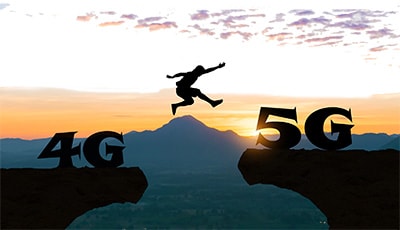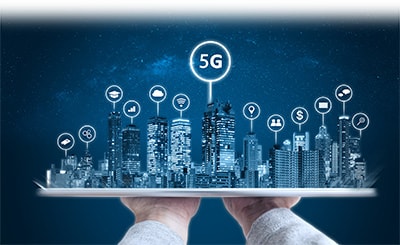5g
Introduction
 ICTs, short for Information and Communication Technologies, is used for social and economic development. With the introduction of new technology, there is an improvement in the quality of life of people using such technology because of the unique benefits and conveniences that this new technology has to offer. 4G wireless network services allow people the comfort is using broadband services on their mobile devices. However, a need arose for high speed, highly reliable, rapid response and energy efficient mobile services. Hence the introduction of 5G technology. Developed countries have aimed to introduce 5G mobile networks for commercial use by 2020. This fast-track introduction of the technology has resulted in the need to regulate how 5G technology is implemented and its environmental impact
ICTs, short for Information and Communication Technologies, is used for social and economic development. With the introduction of new technology, there is an improvement in the quality of life of people using such technology because of the unique benefits and conveniences that this new technology has to offer. 4G wireless network services allow people the comfort is using broadband services on their mobile devices. However, a need arose for high speed, highly reliable, rapid response and energy efficient mobile services. Hence the introduction of 5G technology. Developed countries have aimed to introduce 5G mobile networks for commercial use by 2020. This fast-track introduction of the technology has resulted in the need to regulate how 5G technology is implemented and its environmental impact
Background
What is 5G
5G stands for the fifth generation. It is the next generation of broadband connection, and it will replace or improve the 4G connection. It is a specification that refers to how a network will respond to the needs of cellular networks that are growing. 5G will lead to higher data rates, quicker reaction times, faster upload and download speeds. 5G supplies an enormous amount of spectrum of wireless communication, smaller sizes cells and more modulation schemes, letting higher numbers of wireless users share the spectrum. 5G also leads to broader coverage and more stable connections. These new features allow for smart transportation, instantaneous cloud services, 360-degree videos and holograms while guaranteeing the quality of experience to mobile users.
5G operates on three different spectrum bands, namely the Low band spectrum, Mid-band spectrum, and High Band spectrum. Low band spectrum refers to data speeds that only reach 100 Mbps. Mid-band spectrum refers to faster data speeds at 1 Gbps. Whereas high band spectrum is one that offers speeds of 10Gbps.There are different categories of 5G services. Firstly, there are immersive 5G services, which are concerned with virtual reality, augmented reality and massive contents streaming. Secondly, there are intelligent 5G services that are user-focused and provide for better mobile services in crowded areas. Thirdly, there are Omnipresent 5G services used in the Internet of things. The Internet of Things refers to interconnections of all kinds of devices even household appliances. The fourth category refers to Autonomous 5G services which would be used in self-driving cars. Mainly this fourth category involves smart transportation, drones and robots. The final type is the Public 5G services which would enable more efficient and effective disaster monitoring, private security, public safety and emergency services.
How does 5G technology works?
5G mobile wireless systems are a way for devices to send and receive data wirelessly. 5G signals use wavelengths that measured in millimetres. 5G has higher frequencies, which means there is only a shorter range of coverage. Thus, 5G will use a system of cell sites that send encoded data using radio waves. Each cell site is then connected to a network backbone. 5G will use Multiple Input Multiple Output ports which facilitates signals that travel faster in all directions. To eliminate interference that may occur as a result of the complexity of the network, a method called beamforming will be used. Beamforming refers to a situation whereby a single port sends higher beam signals in distinct directions to reduce interferences.
The implication of 5G technology
Advantages
The advantages of shifting to 5G are numerous. 5G will lead to faster and improved broadband. 5G will allow the proliferation of self-driving cars that will communicate with other cars on the road. 5g will allow such vehicles to obtain information about road conditions, provide information to drivers and automakers. This technology will enable autonomous vehicles to avoid car accidents and save many lives. 5G also enables the effective operation of cities and municipalities. Municipalities will be able to perform their duties more efficiently. Remote control of heavy machinery is also made possible by 5G. in the Healthcare sector it is expected that 5G will lead to improvements in precision surgery and may even lead to remote medical operations. One of the most significant aspects of 5G is the internet of things. 5G will allow communication between sensors and smart devices. A result of 5G is advanced manufacturing which will require no human input. This advanced manufacturing is what is called the Internet of things.
Disadvantages
The needs of people have been the driving force for the creation of mobile broadband networks until now. The needs of machines were at the forefront of 5G technology development. The low latency and high-efficiency data transfer of 5G networks ensure seamless communication between devices. The technology may lead to a wide array of troubles and challenges for people and the environment. The introduction of 5G necessitates the need for new infrastructure. This new infrastructure is called small cells. These smalls cells are a departure from macro cell towers. The small cells are barely noticeable cell towers situated closer together. The small cells will have more input and output ports than there are on the macro cell towers. Smalls cells generate less power, collect and transmit signals in a short range from one another. Thus that the deployment of 5G technology will likely lead wireless antennas every few feet on lamp posts and utility posts. The small cells may also be placed every two to ten homes in suburban areas. Deploying 5G technology will require an unprecedented and immensely large number of wireless antennas on cell towers and buildings. These would be placed much closer together. Each of these cells emits radiofrequency radiation. This radiation will be much harder to avoid because these towers will be everywhere.
The presence of radiofrequency radiation is an essential consideration in deploying 5G technology. The current wireless technologies of 2G, 3G and 4G technologies created health risks to humans, animals and the environment. Wireless company documents outline information that suggests that 5G will increase the levels of radiofrequency radiation. The World Health Organisation’s International Agency for Research on Cancer categorised radiofrequency radiation is a possible carcinogen. Low-level exposure to radiofrequency radiation leads to a myriad of health effects including DNA single strand and double strand breaks, melatonin reduction and generation of stress proteins, all of which lead to cancer and diseases. 5G technology will lead to higher exposure to radiofrequency radiation which presents risks to both human and environmental health.
Regarding human health, there is a concern that the radiation emitted from the small cells will have adverse effects on human skin. Human skin has been found, and it is likely that it will also soak up radiofrequency radiation. Inevitably, this will lead to cancer — furthermore, the sweat ducts located on the upper layer of the human skin act like antennas. Therefore, mortal bodies will become far more conducive to this radiation, increasing the risk of growing cancerous cells. High exposure of radiofrequency has an impact on motor skills, memory and attention. The effects of such high exposure are neuropsychiatric problems, genetic damage and elevated diabetes.
More conclusive information on the harmful effects of the radiofrequency radiation on animals is available. The US National Toxicology Program carried out a study that found that exposing rats to radiofrequency radiation for nine hours in two years led to the development of heart and brain tumour, as well as DNA damage. Various studies carried out elsewhere in the world have indicated that the radiation damages eyes, immune system, elevated lymphoma, cell growth rate, lung and liver tumours, and bacterial resistance.
5G also harms the planet as it poses a severe threat to plant health. Exposure to radiofrequency radiation led to necrosis, which is the death of tissue cells. Exposure to such radiation could lead to the contamination of our food supply.
5G deployment requires many temporary satellites that are propelled by hydrocarbon rocket engines. Such satellites emit black carbon into the atmosphere. Black carbon in the atmosphere will affect the distribution of the ozone, as well as the temperature. These rocket engines will also emit chlorine, which is known to be a chemical that destroys the ozone layer.
5G may even threaten natural ecosystems. Radiofrequency radiation affects birds and bees' health. Radiation may ultimately lead to birds' death, and the egg laying abilities of bees are compromised.
5G technology also requires collocating the cells on other infrastructure. Small cell wireless facility development necessitates streamlined federal, state and local permitting rights of way, application timelines and other siting and application fees and application review timelines and appeal processes to make it economically feasible for wireless companies to deploy the technology across communities.
Legal considerations for the use of 5G networks
 The legislative frameworks throughout the world were designed mainly to regulate human to human interactions and were not intended for machine to machine communications. The laws on telecommunications relate to privacy, roaming and other rules that were designed to protect interpersonal connections between humans. It is essential to compare the telecommunication laws in the United States of America, China and the EU to assess readiness for the deployment of 5G. These laws will be evaluated based on whether they mitigate the environmental and risks of 5G.
The legislative frameworks throughout the world were designed mainly to regulate human to human interactions and were not intended for machine to machine communications. The laws on telecommunications relate to privacy, roaming and other rules that were designed to protect interpersonal connections between humans. It is essential to compare the telecommunication laws in the United States of America, China and the EU to assess readiness for the deployment of 5G. These laws will be evaluated based on whether they mitigate the environmental and risks of 5G.
The United States of America
With the advent of 5G technology comes a need to reexamine the law and how it will need to adapt to 5G technology. The United States’ Federal Communications Commission issued a 5G Technology Plan or the 5G Fast Plan which was aimed at achieving three main goals. These goals were, firstly the releasing of more spectrum into the marketplace; secondly modernising regulations and thirdly limiting the barriers to wireless infrastructure deployment. The Federal Communications Commission’s Spectrum Frontiers Orders has stated an intention to lay the groundwork for the use of 5G technology in the United States by 2020. In the United States federal law, the Repack Airwaves Yielding Better Access for Users of Modern Services Act a wide range measures to facilitate the use of 5G networks in the US has been approved by the US House of Representatives. There are two Acts drafted to streamline the auction and use of airwaves to send and receive 5G signals the Spectrum Deposits Act and the Mobile Now Act of 2016. The Spectrum Deposits Act allows the federal government to identify future spectrum for 5G use. The Spectrum Deposits Act also provides for the government to speed up the installation of 5G equipment on federal property.
In the United States of America, 21 states have enacted small cell legislation. This legislation streamlines regulations to facilitate the deployment of 5G small cells. Each state considered its state and local environment before passing the legislation. The fundamental principles of the legislationis are streamlined applications to access public rights of way. This allows mobile network providers to place poles and facilities in public rights of way. The legislation places a cap on costs and fees. The small cells are to be attached to public structures. All states enacted must impose annual fees on new attachments to public structures. The legislation also regulates the streamlined timelines for the consideration and processing of cell siting applications.
The United States Courts of Appeals decided to quash a motion to stay the Federal Communications Commission’s revised rules relating to the rollout of small-cell 5G technologies. This decision allows for telecommunications companies to mount small cell 5G equipment on street lights. This decision goes against the need for community decision making relating to public safety and well being.
The Secure 5G and Beyond Act was introduced by US senators which obliged to President to develop a security strategy for next-generation networks. The Act, however, prevents the President from nationalising 5G networks. The Bill advocates for a National Telecommunications and Information Administration to ensure that the advantages of 5G are harnessed in a way that minimises the risks of using the 5G networks. The Bill also tasks the President with providing that foreign allies maximise the security of their telecommunications networks and software.
The Federal Communications Commission is in the process of assigning additional high band spectrum, mid-band spectrum, low band spectrum and unlicensed spectrum. Assigning these spectrum bands will allow for an increase in low latency data traffic. This allocation will be beneficial to the Internet of Things (IoT) devices.
The US government is keen to foster the development and advancement of the IoT. The National Telecommunications and Information Administration’s Internet Policy Task Force has reviewed the benefits, challenges and potential role of the government accordingly.
The European Union
According to the European Commission’s Digital Agenda for Europe targets, at least one major city in every Member State of the European Union should have a commercial 5G network by 2020.
The Council of the European Union met in Brussels in December 2018 to reach an agreement on the European Electronic Communications Code. The code encourages spectrum allocations across the European Union. A minimum license lasts for 15 years, but it can be extended quite easily for another five years. The code includes an outline for the renewal, transfer, sharing and lease of spectrum rights processes. The code obliges for 5G spectrum bands to be assigned by the 31 of December 2020.
Like the United States, operators and mobile service providers are granted a right of way on public infrastructure. But unlike in the United States, it is not necessary for the mobile services providers to be subject to prior permits, fees or charges.
The European Communications Code has been criticised as failing to pre-empt some of the long term challenges of the European telecommunications sector. This lack of foresight could mean hindering the deploying 5G networks in Europe. The Code has been said to be unclear as it involves complexities that confuse electronic communications service providers and machine to machine service providers.
The European Communications Code is said to be fragmented because of the level of 5G service regulation in Europe will differ from state to state. The Code does not include measures to promote the harmonised availability of 5G across EU member states. As stated before, the deployment of 5G services requires new frequency bands. New frequency bands are possible when a copious amount of small cells is deployed because higher frequencies have a shorter transmission range. Previous regulations were primarily focused on more massive high power macrocells. These regulations are not appropriate in the case of networks using these smaller cells. Some European countries such as Italy and Greece have failed to create legislation that is welcoming to 5G technology because of the ineffectiveness of law-making bodies as well as the burden of government regulation. Luxembourg, on the other hand, can make the required regulatory interventions as a result of the effectiveness of the law-making bodies and the law relating to ICT. Switzerland is a non-EU country but stands in better stead than EU nations to issue effective regulations and policy in the realm of 5G technology. The Netherlands, Norway and the United Kingdom are EU member states that have powerful law-making capabilities that enable them to harness the advantages of 5G technology.
The Code does indeed create a more efficient and flexible framework for the introduction of 5G technology. The drawback is that the code will only be implemented in 2020, but by then the deployment of 5G technologies would already have been implemented.
The People’s Republic of China
The Chinese government has keenly promoted the development of 5G technology and the IoT. The Chinese government has developed many laws and regulations including legislation on information security, intellectual property rights and data protection. Unfortunately, China does not have a comprehensive regime for the introduction of 5G technology and IoT. The Ministry of Industry and Information Technology (MIIT) of China has been driving the implementation of 5G technology. The Ministry of Industry and Information Technology is tasked with issuing licenses to mobile networks to deploy 5G hardware and software.
China would have been an ideal country for supplying the United States, Japan and Australia with the hardware needed for 5G mobile networks. The National Intelligence Law of 2017 and the Counter Espionage Law of 2014 enacted in China state that Huawei, a company with its parent plant in China, would be obliged to provide the Chinese government with any information it requires. Article 7 fo the National Intelligence Law states that any organisation or citizen must cooperate with the state intelligence authorities in terms of the law". The Counter Espionage law states that “when the state security organ investigates and understands the situation of espionage and collects relevant evidence, the relevant organisations and individuals shall provide it truthfully and may not refuse”. Huawei was otherwise poised to become the core backbone of 5G infrastructure in advanced western liberal democracies.
Regulating Environmental Impact
Although China and the United States, as well as the European Union, have created a legal landscape to support the introduction of 5G technology. It is however interesting that neither of these countries has enacted or proposed legislation that regulates the environmental harm and the adverse effects on humans.
The European Commission has absolved itself of responsibility for any potentially harmful effects of radiofrequency radiation. The Treaty on the Functioning of the European Union states that the primary responsibility for protecting the public from potentially adverse effects of such radiation remains with the Member States. The regulation of the environmental impact will undoubtedly be varied amongst the Member States.
In Brussels, plans for a pilot project to provide high speed 5G wireless internet in Brussels were stopped. The halt is because it is not possible to estimate the radiation from the antennas of the small service required for 5G service. In the Netherlands, political parties were anxious to know what the potential dangers if the small cells were installed on a large scale. The Netherlands Parliament, therefore, urged the Health Council of the Netherlands to carry out an independent investigation into 5G radiation. In Germany, a petition with 56 643 signatures requested that the German Parliament suspended the procedure to award 5G frequencies because of doubts as to the safety of this technology.
There is an International Appeal to Stop 5G on Earth and In Space addressed to the United Nations, the European Union, the Council of Europe and the World Health Organisation with 63 379 signatories from at least 168 counties as of March 29 2019.
In the United States, more than two hundred and forty scientists and doctors originating from 41 different member states have appealed to the United Nations calling for urgent action to reduce exposure to radiofrequency radiation. This appeal has clout as these scientists and doctors have all published peer-reviewed journal articles on electromagnetic radiation or 5G health dangers. These academics also sent a letter to the Federal Communication Commission asking for a moratorium of 5G technology deployment because of the potential impact on human health and the environment.
It is questionable whether citizens of the affected future smart cities can challenge the introduction of 5G technology on the basis that it is a hazard to human and environmental health. Section 704 of the Telecommunications Act of 1996 stops state and local government from considering the potentially harmful environmental effects of cell tower radiation if the radiation does not exceed FCC limits. It is clear that 5G radiation exceeds these FCC limits, but rulings of the courts on this section has shown that the court prefers to interpret such a provision in favour of the mobile service network
Recommendations
Scientists have cautioned that before deploying 5G technology, the effects of this technology on human health must be studied. Parliaments of the developed countries should draft legislation to mitigate the impact of 5G technology.
Conclusion
 The United States and the European Union have regulated the deployment of 5G technology through legislation, and China has done so through the Ministry of Industry and Information Technology. Neither the United States, the European Union and China have tried to lessen the potential environmental and health impact of 5G technologies. It is likely that environmental laws will be enacted in reaction to such effects when the full ramifications of the using 5G technology are known.
The United States and the European Union have regulated the deployment of 5G technology through legislation, and China has done so through the Ministry of Industry and Information Technology. Neither the United States, the European Union and China have tried to lessen the potential environmental and health impact of 5G technologies. It is likely that environmental laws will be enacted in reaction to such effects when the full ramifications of the using 5G technology are known.
 Русский
Русский
 English
English 官话
官话 português
português عربي
عربي
 Türk
Türk 






.jpg)





